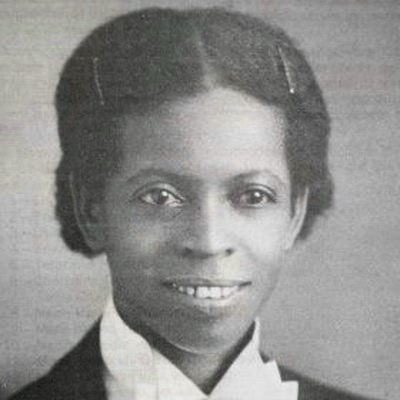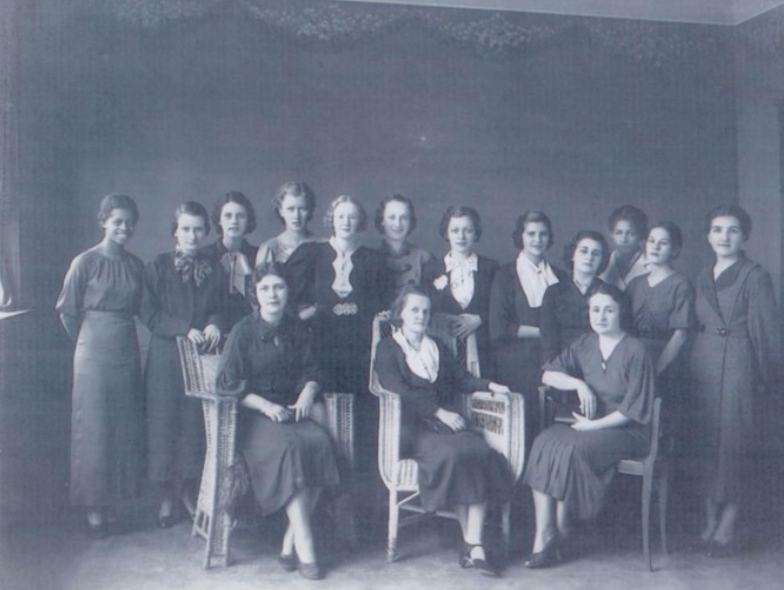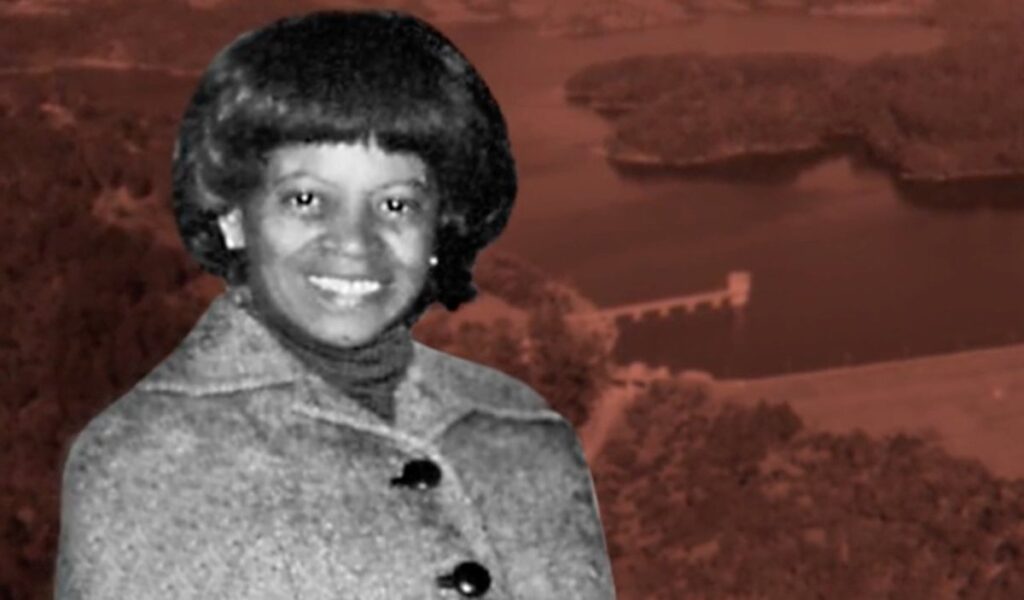We’re so excited to talk about this woman! She made history by being awesome, refusing to give up, working hard and not accepting the limitations they wanted to impose on her.
Her name is Enedina Alves Marques, the 4th female engineer in Brazil, the first female engineer in the south of the country, the first black engineer in the country. When do you think this happened?
Enedina graduated in civil engineering in Paraná in 1945. She not only defied social expectations by being a black woman who chose to go beyond what was possible for women, to be a teacher, nanny or domestic – she entered university in a men’s field, graduated and had a spectacular career!
A large part of the information used in this episode came from Jorge Luiz Santana’s monograph. I also recommend that you watch a live that is on Facebook with Sandro Luis Fernandes.
The Context
Let’s start by understanding a little more about the context in which Enedina was born and grew up. Paraná passed through the 19th century as the largest producer of… surprise, surprise, yerba mate in the country. In addition to mate, other important commercial activities were agriculture and logging. But it was mainly the mate industry that became a very technical and urban industry. At the beginning of the 20th century, urbanization accelerated, with increases in land and rental prices. But even so, about 60 families arrived at the capital every month in search of better living conditions. At that time, too, between the end of the 19th century and the beginning of the 20th century, European immigrants arrived in large numbers in the south of the country.
Even after the end of slavery in 1888, stereotypes and attitudes of society continued to keep the black population away from the means of political and social-economic coexistence. These spaces were already largely dominated by European immigrants in Paraná. The priority was given to the immigration policy of Europeans, not to create structures for the freed population. European whites were considered more apt to the needs and the development and progress project based on the whitening of the nation, according to Octávio Ianni.

Early Life
Enedina Alves Maques was born in 1913. Her parents, Paulo Marques and Virgília Alves Marques, arrived in Curitiba, we do not know where, in 1888, after the abolition of slavery, seeking better living conditions.
Virgília, also known as Dona Duca, worked as a laundress, in addition to taking care of the home and family. The couple separated and Dona Duca went to work and live with the family of the republican military and intellectual Domingos Nascimento (son of a Guarani indigenous mother and a fisherman father), in a neighbourhood on the outskirts of Curitiba. She took her children with her and Enedina, the only girl. This change was one of those things that completely changed little Enedina’s prospects. And not only hers, the whole family, because even after the death of Domingos Nascimento, Dona Virgília and her children continued to work and live with their family for more than three decades.
Domingos Nascimento was a delegate, a man of wealth and money. He had a daughter Enedina’s age, and they were friends. So he put Enedina on the school table with her daughter, so that she could keep her daughter company and receive an education.
Perhaps that was her first experience of being in a place that the Negro rarely occupied. And it is good to remember that in post-abolition Brazilian society, there were no public policies offering free education, which really hampered expectations of social ascension for the black population, who only a few decades before was not paid for their work, had no savings for generations.
Well, then Enedina went to school and received educational instruction. But she also accompanied and was prepared by her mother for housework: she sewed, she cooked, she embroidered, she knitted. Even as a child, she already worked as a nanny and domestic. Enedina was literate at the age of 12, and at school, she was considered an intelligent and applied student.
As a teenager, Enedina continued to do domestic work in homes of elite families in Curitiba to pay for her studies. She studied at the Paraná Institute of Education and, in 1931, she graduated as a middle school teacher. Then, in 1932, she started to work in the public network, in several cities in the interior of the state, giving classes to children who would be today from 1st to 5th year.

Engineering School
After 3 years working in the interior of Paraná, she returned, in 1935, she returned to work with a family, besides continuing to work as a teacher. She probably did this in order to stay in Curitiba, because that was also where she went back to school. This time, she started studying the Madureza Course at the Ginásio Novo Ateneu, for two years, a kind of updating or professional training that teachers should do. As I already mentioned, public education did not exist, so she paid for this course. At first, she was living in Portão, at Domingos’ house, where her mother still worked.
But at some point during that time, Enedina met, through her studies, a guy named Joto. She studied at night and finished late, and Joto invited her to move in with him and his brother’s family in Juvevê. So, it was much closer to her. And that’s how she started to live in the house of Iracema and Mathias Caron, a family that is a super source of information about Enedina.
Even though she was not formally employed in this house, Enedina worked in exchange for accommodation there. And in fact, Enedina continued to live with them, even after graduating, already as a friend of the family, until 1954. It was only there that she moved to where she would live the rest of her life: the Tijucas building, in downtown Curitiba.
But let’s not jump in time! The niece of the couple she lived with, Elfrida, who lived with her from 1935 until 1954 talked about how Enedina was super skilful and intelligent.
Then, in December 1939, Enedina Marques wrote an application requesting registration for the qualification exams to enter the civil engineering course and sent it to the director of FEP. To enter the course, it was necessary to pass the exams, present the required documentation, and pay an amount that in 2011 was equivalent to almost two minimum wages at the time.
There were some aids and subsidies in exchange for hours of service rendered to the institution, but in fact many times those who benefited from these aids were the children of influential people in society. According to Enedina’s classmate and friend, named Adelino Silva, who is also a middle school teacher and a bricklayer’s son:
“Enedina paid […], she did not receive the aid, the free education was for the children of the fish […]”. He got the aid after trying for three years, but the Enedina did not succeed.
As I think you can imagine, higher education at that time, specifically speaking of Paraná, because this is what I researched, the colleges were created by the local elite groups. They were instruments to perpetuate and maintain power with a local intellectual elite, you know? We know that in the dispute for central power, access to education was and is fundamental. The places that each individual has access to have the power to perpetuate socioeconomic conditions. And that was very true in the circumstances that Enedina lived. The course was practically exclusive to the bourgeois group from Paraná, and with an almost hegemonic male group. Then she transposed a mostly male and white space. Before her, two blacks graduated in Engineering at the institution: Otávio Alencar (1918) and Nelson José da Rocha (1938).
Years later, in 1956, the sixth FEP civil engineering graduate, Coradine Taggesell, said: “We were about eighty students and only three women. Only I graduated as a woman in that class, the other two colleagues, unfortunately, gave up.”
So imagine, if it was like that almost 20 years later! Oh, and another thing to think about how difficult that situation was: It was so poorly adapted to women that not even a separate bathroom had: they had to use the same ones as men.
And Enedina’s career in college was very complicated, of course. Eleny told Sandro Fernandes, a historian and social scientist that I talked about before, often woke up at dawn and saw Enedina leaning on the nightstand and studying, to manage the university.
Years later, the director of FEP made a reference to all the women in the institution’s engineering courses until 1973, speaking of the vision of how men helped her: “she found, through her colleagues, the solicitude and collaboration that facilitated her to complete the project. course”. It seems so, they had colleagues and friends who helped, lent material and books to be copied. Sandro says that, after a while, they accepted Enedina very well: when she was already included in the community, she was a soccer referee in academic events. But of course, she continued to suffer racism and machismo from students and teachers, who charged her more than other students, as if she had to prove twice as much.
Altogether, Enedina studied for six years (1 year longer than normal duration). It is not surprising that she had some disapprovals, working and studying, on a course that already had high rates of dropout and failure. In fact, the last exam she did was 24 hours before graduation.
Elfrida told me that in one year “she failed and she said: I don’t I give up, (slowly), I go to the end, one day they
they get sick of my face and approve of me. And that’s what really happened, she didn’t give up, she went ahead”
When she graduated in 1945, at 32, she was the only woman next to 32 men. Her classmate and friend Adelino Alves da Silva, remembers the tributes she received, with colleagues who did not even speak to her during the course, congratulating them and everything. He also said that “the elite did not mix, it did not relate to the people, neither middle class nor poor class”.
The outfit she wore had been a gift from her prom godmother Iracema Caron, a dress they made themselves. Enedina asked Iracema and Mathias to take her to the events, solemnity and the party as if they were her parents.

A Blazing Career
Enedina was well connected: Sandro says that she was a teacher at a school called war shooting. She was exonerated but soon after she joined the State Department of Transportation and Public Works of Paraná in 1947 as an engineering assistant. She became close to a governor of Paraná, called Moisés Lupion, who transferred her to the State Department of Water and Electricity. From then on, she really has a super spark in her career. She started out as inspector of state works, then was the first engineer to head the engineering division of the state’s statistics section. He became the supervisor of the works at the Cotia Hydroelectric Plant and participated in several important works in the State, such as the Capivari-Cachoeira Plant (currently Governador Pedro Viriato Parigot de Souza Plant, the largest underground hydroelectric plant in the south of the country. He also works on the Hydroelectric Plan of the state, in addition to taking advantage of the waters of the Capivari, Cachoeira and Iguaçu rivers.) and the construction of the Paraná State College and the Curitiba University Student House (CEU).
There is this story that, during the work at the Plant she became known for wearing overalls and carrying a gun at her waist to make herself respected. That she used to shoot into the air whenever she felt it necessary to make herself respected. The fact is that the obstacles continued to exist, even after she became an engineer. But she was a strong woman, she made her opinions clear. She went and debated with the men, which was something very different at the time. So much so that she has a very bad career, she retires with a judge’s salary.
She was recognized for her work, in life, before retiring. So many times, when we talk about the history of these historical women, we realize that they were not recognized, or did not have financial freedom … and Enedina had that. She was recognized, paid according to her awesome skills.
And speaking of freedom, Enedina did not marry or have children. I think that allowed her, after establishing herself and structuring her career, to dedicate herself to getting to know the world and other cultures, travelling between the 1950s and 1960s. She travelled a lot – Israel, United States, Europe. On these trips, she bought wigs, clothes, accessories. In that same period, in 1958, Major Domingos Nascimento passed away, leaving her as one of the beneficiaries in his will. And a curiosity, The wooden family house was dismantled and transferred to Juvevê and, today, it houses the regional headquarters of the National Historical and Artistic Heritage Institute.
In 1961 she was interviewed by the sociologist Octávio Ianni in 1961, for the research “Metamorphoses of the slave”, funded by Unesco. There she tells a little about her experience as a black woman in the south of the country. The book wanted to analyze that idea that Brazil was a racial democracy.
After retiring in 1962, at the age of 49 (early, right). There, she received recognition from Governor Ney Braga, who, by decree, admitted the engineer’s achievements and guaranteed her earnings equivalent to the salary of one. Then she became involved in civic activities, participating in an international organization focused on human rights and women.
She was also one of those people that everyone wanted as a godmother for their children. She was the godmother of Eleny’s daughter too, and from what Eleny says, she pampered a lot.
At 68, she died of a heart attack. Unfortunately, as she didn’t live with anyone, her body took about a week to find.
At the time, the sensationalist press, in particular the Diário Popular, fell to the death, put a photo of her body in bad taste, photos of the body in nightgowns, suggesting that she had been the victim of a passionate crime, printed several tabloids. But the engineers from the Paraná Institute of Engineering went there, wrote disapproval notes and made the newspaper recant, and other articles highlighting her work were published after that. Her grave is in the Municipal Cemetery of Curitiba. The engineering institute of Paraná restored Enedina’s tomb.
In 1988, an important street in the Cajuru neighbourhood in Curitiba-PR, receives its name: Rua Engenheira Enedina Alves Marques. For the celebration of 500 years of Brazil, the Memorial à Mulher (Memorial to Women) was built in Curitiba, which recorded and immortalized 54 female personalities – among them, Enedina, the “engineering pioneer”. In her honour, the Enedina Alves Marques Institute of Black Women was founded in 2006 in Maringá, committed to fighting racial invisibility that affects black women and men in various sectors, such as the school environment, the labour market and other social spheres.

More information (in Portuguese):
- https://www.facebook.com/watch/live/?v=860589117786735
- https://revistas.ufpr.br/vernaculo/article/view/33232/21293
- http://www.humanas.ufpr.br/portal/historia/files/2013/09/jorge_luiz_santana.pdf
